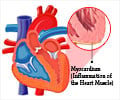Common chronic oral infections in childhood may increase the risk of heart disease later in life, finds a new study.

‘Prevention and treatment of oral infections are important in childhood as a new study reveals that not maintaining oral health during childhood can raise the risk of heart disease in later life.’
Read More..




"The observation is novel since there are no earlier follow-up studies on childhood oral infections and the risk of cardiovascular diseases," says docent Pirkko Pussinen from the University of Helsinki. Read More..
More progressed oral infections and inflammations endodontic lesions and periodontitis - are known to be associated with several cardiovascular risk factors and disease risk in adults. In adults periodontitis, in particular, has been studied extensively, and currently, it is considered an independent risk factor for atherosclerotic vascular diseases. The treatment of periodontitis is also known to decrease cardiovascular risk factors.
The association between childhood oral infections and atherosclerosis was found in a study conducted at the University of Helsinki, Department of Oral and Maxillofacial Diseases, in collaboration with the national Cardiovascular Risk in Young Finns Study research group.
The study was initiated in 1980 when clinical oral examinations were conducted for 755 children aged 6, 9, and 12 years. The follow-up ended in 2007 when the carotid artery intima-media thickness was measured in an ultrasound examination of participants, who were then 33, 36, and 39 years old.
The follow-up was 27 years, and cardiovascular risk factors were measured at several time points. Cumulative exposure to the risk factor was calculated in both childhood and adulthood. The signs of oral infections and inflammation collected in the study included caries, fillings, bleeding on probing, and probing pocket depth.
Advertisement
From all children, 68%, 87%, and 82% had bleeding, caries, and fillings, respectively. There were no differences between the boys and the girls. Slight periodontal pocketing was observed in 54% of the children, and it was more frequent in the boys than in the girls. Only 5% of the examined mouths were totally healthy, whereas 61% and 34% of the children had one to three signs and four signs of oral infections, respectively.
Advertisement
Both caries and periodontal diseases in childhood were significantly associated with carotid artery intima-media thickness in adulthood. Thickening of the carotid artery wall indicates the progression of atherosclerosis and an increased risk for myocardial or cerebral infarction.
The researchers emphasize, in conclusion: "Oral infections were an independent risk factor for subclinical atherosclerosis, and their association with cardiovascular risk factors persevered through the entire follow-up. Prevention and treatment of oral infections are important already in childhood."
Source-Eurekalert















